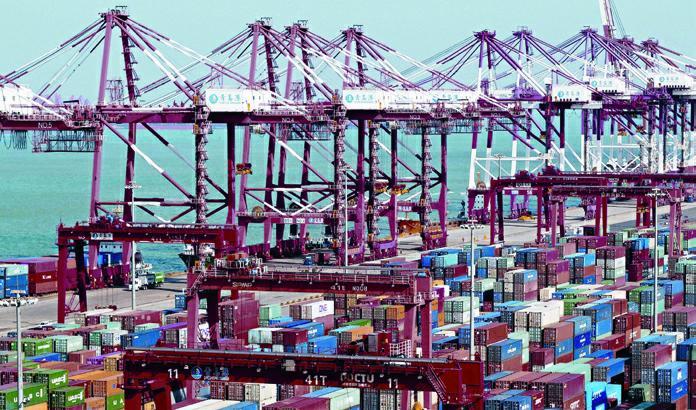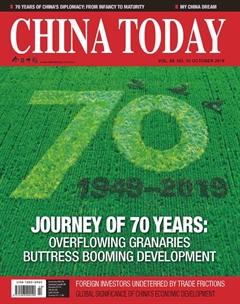China Becomes No.1 Engine of World Economic Growth

China Becomes No.1 Engine of World Economic Growth
Chinas economic growth rate is significantly higher than the worlds average, making it the worlds top economic growth engine, according to a new report by the National Bureau of Statistics.
Data show that from 2013 to 2018, Chinas economy continued to grow rapidly, with an average annual growth of 7.0 percent, significantly higher than the worlds average growth of 2.9 percent in the same period.
Chinas economic strength has been significantly enhanced, and its main aggregate indicators have risen to the forefront of the world. Chinas economy has become the second largest in the world. Its output of major industrial and agricultural products, such as grain and meat, has jumped to the forefront of the world. The total imports and exports also rank top in the world. In addition, total exports and imports in services have risen to the second place in the world. Chinas outward foreign direct investment (FDI) ranks second in the world. Over that period, the country attracted the second largest amount of FDI in the world. In terms of tourism, outbound tourists and overseas tourism expenditure also rank first in the world. China also remains in the first place in the world in terms of total mileage of high-speed railways and expressways.
Service Industry Becomes Largest Industry in China
Chinas service industry has become the largest industry. From 1952 to 2018, the added value of Chinas tertiary industry, or the service industry, expanded from RMB 19.5 billion to RMB 46.96 trillion, with an average annual growth of 8.4 percent at constant prices. The contribution of the service sector to the GDP is increasing, reaching 59.7 percent in 2018. That year, the service sector attracted 68.1 percent of the FDI, making it a favorite field for foreign investors.
During the same period, the share of the service sector in the GDP had increased, accounting for 50 percent in 2015 and 52.2 percent in 2018.
Since the 18th National Congress of the CPC, the contribution of the service sector to GDP has risen, jumping by 14.7 percentage points in six years to 59.7 percent in 2018. By the end of 2018, the service sector had created 359.38 million jobs, accounting for 46.3 percent of Chinas total employment.
China Sees Rapidly Expanding Fixed Asset Investment over Past 70 Years
Since the founding of the PRC 70 years ago, Chinas fixed asset investment has maintained rapid growth, with an average annual growth of 15.6 percent.
Over the past 70 years, investment has been one of the major driving forces of economic development. Since the 18th National Congress of the CPC in 2012, economic growth has been further driven by consumption, investment, and exports.
The role of investment in fixed assets has been strengthened.
From 2013 to 2018, investment in hi-tech industries grew at an annual rate of 16.9 percent, 6.2 percentage points higher than that of fixed assets investment. Among them, investment in hitech manufacturing grew at an average annual rate of 15 percent, 5.4 percentage points higher than that in all manufacturing industries. Investment in hi-tech services grew at an annual rate of 20.3 percent, 8.2 percentage points higher than the total investment in the service sector. At present, Chinas aerospace, satellite navigation, smart phones, computers, electronic communications, and other hi-tech industries have formed a comprehensive, integrated, and robust industrial ecosystem, moving toward the middle and high end of the global industrial chain.
Chinas Digital Publishing Industry Values RMB 833 Billion
A recent report titled Annual Report on Digital Publishing Industry in China: 2018-2019 has been released by the Chinese Academy of Press and Publication (CAPP) in Beijing.
According to the report, the overall revenue of Chinas digital publishing industry was about RMB 833 billion in 2018, up 17.8 percent over the previous year.
Wei Yushan, head of the CAPP, pointed out that the gross income of Internet journals, electronic books, and digital newspapers reached RMB 8.57 billion in 2018, with an annual growth of 3.6 percent, lower than the growth of 5.35 percent in 2017. The share of these three categories in the total digital publishing revenue was 1.03 percent, slightly lower compared with 1.17 percent in 2017 and 1.54 percent in 2016.

